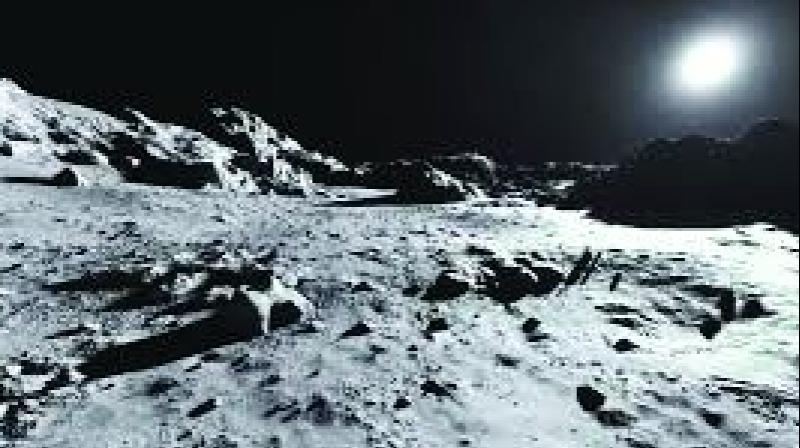Precious metals likely below Moon surface

Toronto: A repository of precious metals may be locked deep below the Moon’s surface, according to a study that drew parallels between mineral deposits found on Earth and the lunar body.
“We have been able to link the sulphur content of lunar volcanic rocks to the presence of iron sulphide deep inside the Moon,” said James Brenan, a professor at Dalhousie University in Canada.
“Examination of mineral deposits on Earth suggests that iron sulphide is a great place to store precious metals, like platinum and palladium,” Brenan said.
Geologists have long speculated that the Moon was formed by the impact of a massive planet-sized object from the Earth 4.5 billion years ago.
Because of that common history, it is believed that the two bodies have a similar composition.
Early measurements of the precious metal concentrations in lunar volcanic rocks done in 2006, however, showed unusually low levels, raising a question that has perplexed scientists for more than a decade as to why there was so little.
Brenan said it had been thought that those low levels reflected a general depletion of the precious metals in the Moon as a whole. The research, published in the journal Nature Geoscience, offers an explanation on the surprisingly low levels and adds valuable insight into the composition of the Moon.
“Our results show that sulphur in lunar volcanic rocks is a fingerprint for the presence of iron sulphide in the rocky interior of the Moon, which is where we think the precious metals were left behind when the lavas were created,” he said.
Brenan, along with colleagues Jim Mungall of Carleton University in Canada and Neil Bennett formerly of the Geophysical Laboratory, did experiments to recreate the extreme pressure and temperature of the lunar interior to determine how much iron sulphide would form.
They measured the composition of the resulting rock and iron sulphide and confirmed that the precious metals would be bound up by the iron sulphide, making them unavailable to the magmas that flowed out onto the lunar surface.
Brenan clarified that there was likely not enough to form an ore deposit, “but certainly enough to explain the low levels in the lunar lavas.”

